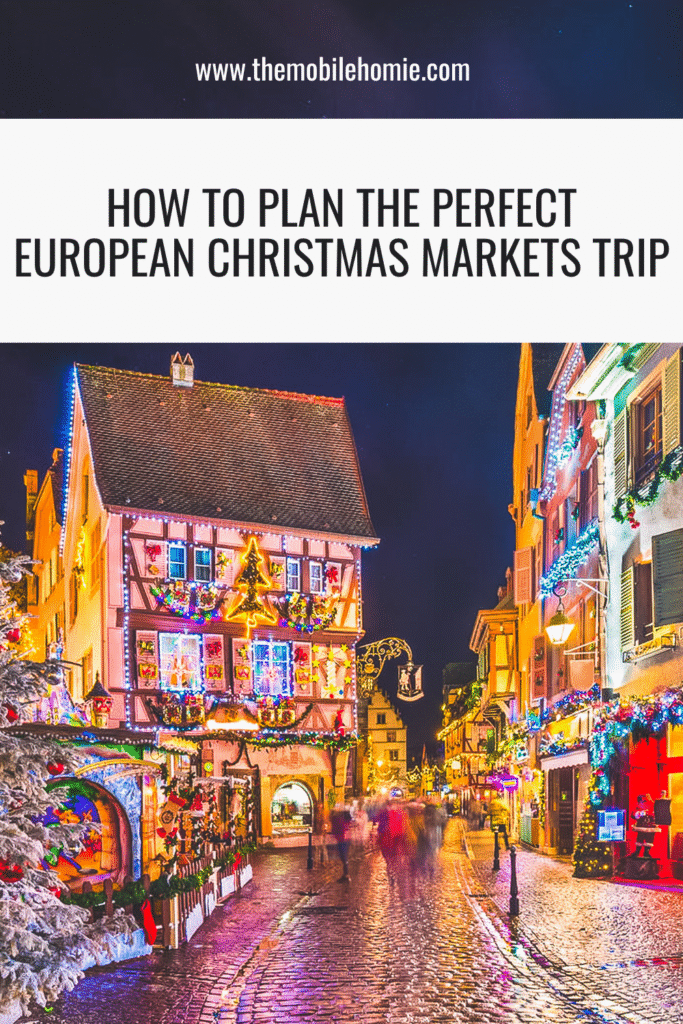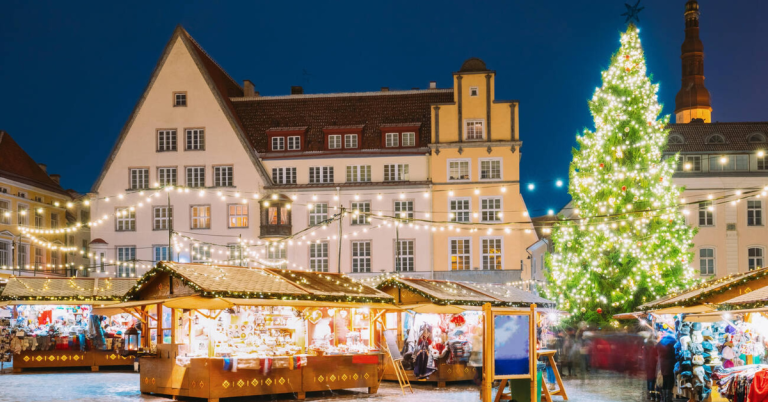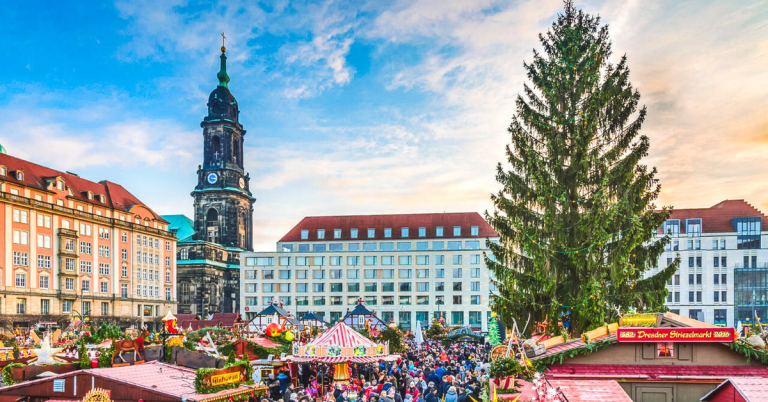How to Plan the Perfect European Christmas Markets Trip
The Mobile Homie contains affiliate links and is a participant in the Amazon Services LLC Associates Program, as well as other affiliate programs. If you click on a link or make a purchase through one of these links, we may earn a small commission at no extra cost to you. For more details, see our Privacy Policy.
There’s something about walking through a centuries-old town square, glühwein warming your hands, snowflakes catching the glow of a thousand twinkling lights, while the smell of roasted chestnuts and cinnamon swirls around you. That’s the essence of a European Christmas market trip, and honestly? It’s one of those experiences that lives up to every bit of hype you’ve heard.
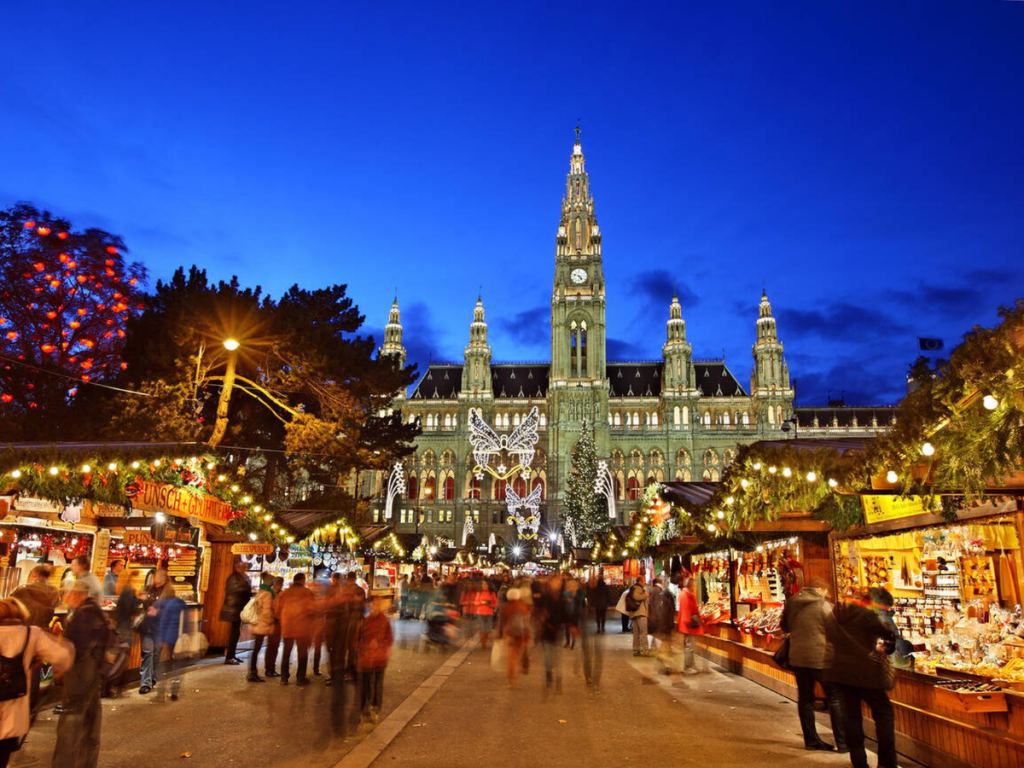
JT and I spent December 2024 hopping through seven countries, chasing the magic of European Christmas markets. We started in Budapest, wound our way through Bratislava and Vienna, flew north to the Baltic charm of Tallinn and Riga, then circled back through Poland’s Wrocław before ending in Prague.
Two days in each city, covering as many markets as humanly possible (and probably consuming way too much mulled wine & food in the process).
What we discovered along the way surprised us. Sure, the famous markets in Vienna and Budapest delivered that grand scale we expected. But the real treasures? Those were the underrated gems in places like Bratislava and Wrocław, where markets felt authentically local, crowds were manageable, and the food was phenomenal without draining our wallets.
Planning a European Christmas market trip can feel overwhelming. Which cities should you visit? How do you get around in winter? What’s a realistic budget? We’re breaking down everything we learned from our December adventure so you can plan your own perfect festive journey through Europe.
When to Visit European Christmas Markets
Best Dates
Timing your European Christmas market trip requires balancing several factors: market opening dates, weather conditions, crowd levels, and your own holiday schedule.
Most Christmas markets open in late November, typically the weekend before the first Advent Sunday. This means markets usually kick off around November 20-25 depending on the year. The 2025 season will see most markets opening between November 14-21.
Markets traditionally close on December 23 or 24 (Christmas Eve), though this varies by location. Some cities extend their markets through New Year’s, which can be perfect if you’re traveling during the holiday break from work. Vienna’s Schönbrunn Palace market, for example, runs from November 6, 2025 – January 6, 2026, while many German markets shut down on Christmas Eve and don’t reopen.
Weather Considerations
Weather in December varies dramatically across Europe, and this affects your planning more than you might expect. Western Europe (France, Belgium, western Germany) tends toward cold and rainy rather than snowy.
Central Europe (Austria, southern Germany, Czech Republic, Poland) offers your best shot at that picture-perfect snowy Christmas market experience. We got lucky with light snow in Vienna and Prague, and let me tell you, it absolutely elevates the entire atmosphere. Temperatures typically hover between 25-40°F (-4 to 4°C), cold enough to appreciate warm drinks but manageable with proper layering.
Eastern European markets in places like Bratislava and Wrocław can get seriously cold, especially as you move into January. We’re talking single-digit temperatures at times. But here’s the thing: fewer tourists brave these conditions, meaning you get more authentic experiences at better prices.
The Baltics require serious cold-weather preparation. Tallinn and Riga in December can drop well below freezing, with short daylight hours (sunset around 3:30 PM). However, this creates an incredibly atmospheric experience. Markets glow against dark winter skies, and the cold gives you a legitimate excuse to sample every warm drink vendor you encounter (speaking from experience here haha).
Crowd Considerations
Crowd considerations matter almost as much as weather. The first weekend of December through mid-month offers that sweet spot of fully operational markets without peak crowding. The week before Christmas brings maximum crowds as both tourists and locals finish holiday shopping. If you hate crowds, avoid December 20-23 entirely.
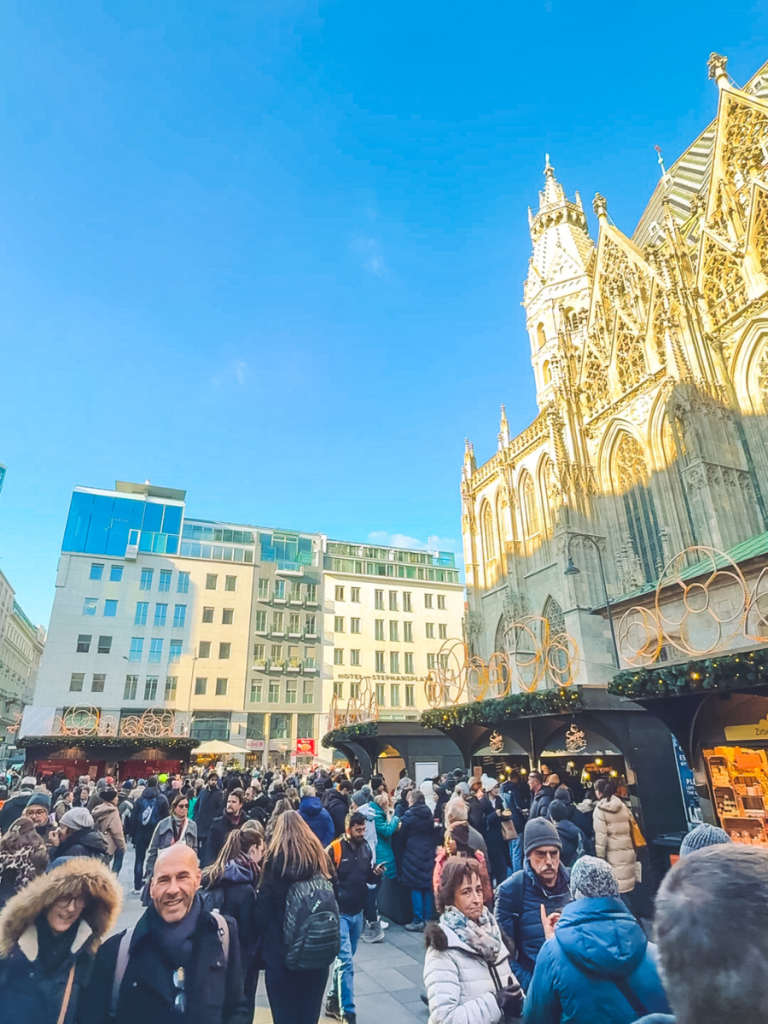
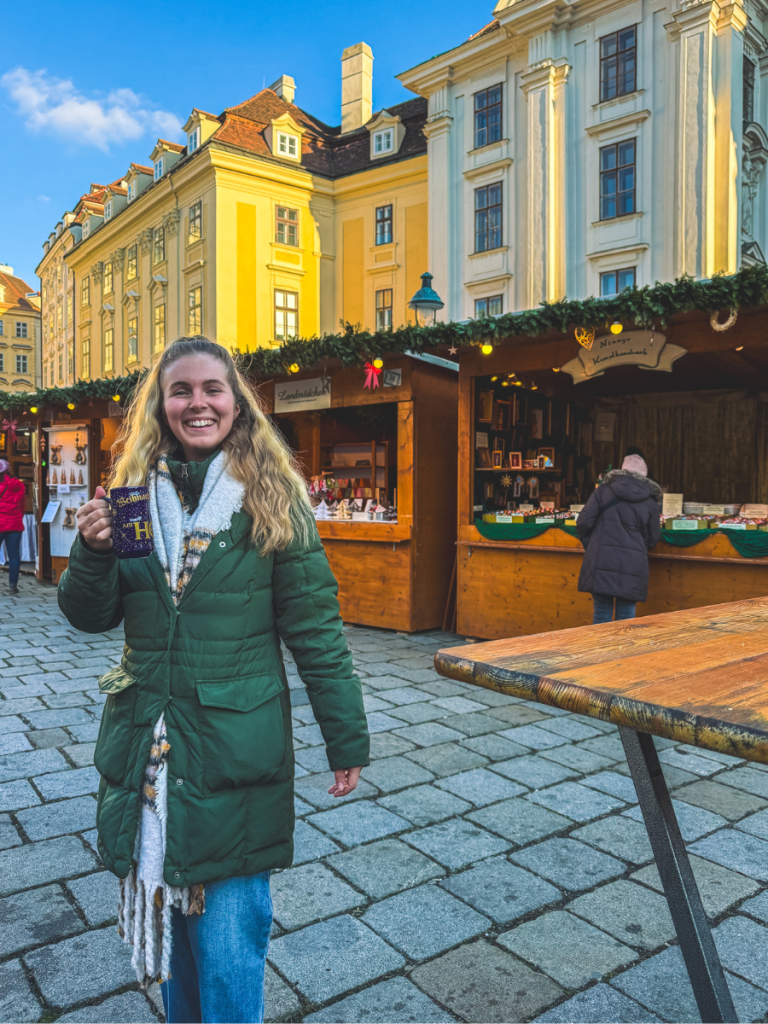
Early-season visits (late November to early December) mean fewer tourists, better accommodation prices, and markets that still feel fresh and exciting to vendors. The downside? Not all stalls might be open yet, and some markets are still finding their rhythm.
We timed our trip for early December, which worked perfectly. Markets were fully operational, crowds were manageable outside of prime evening hours (and prime markets), and we locked in decent accommodation prices by booking two months ahead (though earlier would have been better).
Choosing the Right Destinations
This is where Christmas market trip planning gets personal. With hundreds of markets across dozens of European cities, you need to match destinations to your travel style, budget, and what you want from the experience.
Germany: The Heart of Christmas Markets
Germany invented the Christkindlmarkt concept, and German cities take Christmas markets seriously. We didn’t visit Germany on this particular trip, but it’s impossible to discuss European Christmas markets without acknowledging the OGs.
Nuremberg’s Christkindlesmarkt is often called the world’s most famous Christmas market. The medieval old town setting, traditional Bavarian decorations, and legendary lebkuchen create an experience that defines what most people imagine when they think “German Christmas market.” Expect significant crowds, especially on weekends, but the atmosphere justifies the hustle.
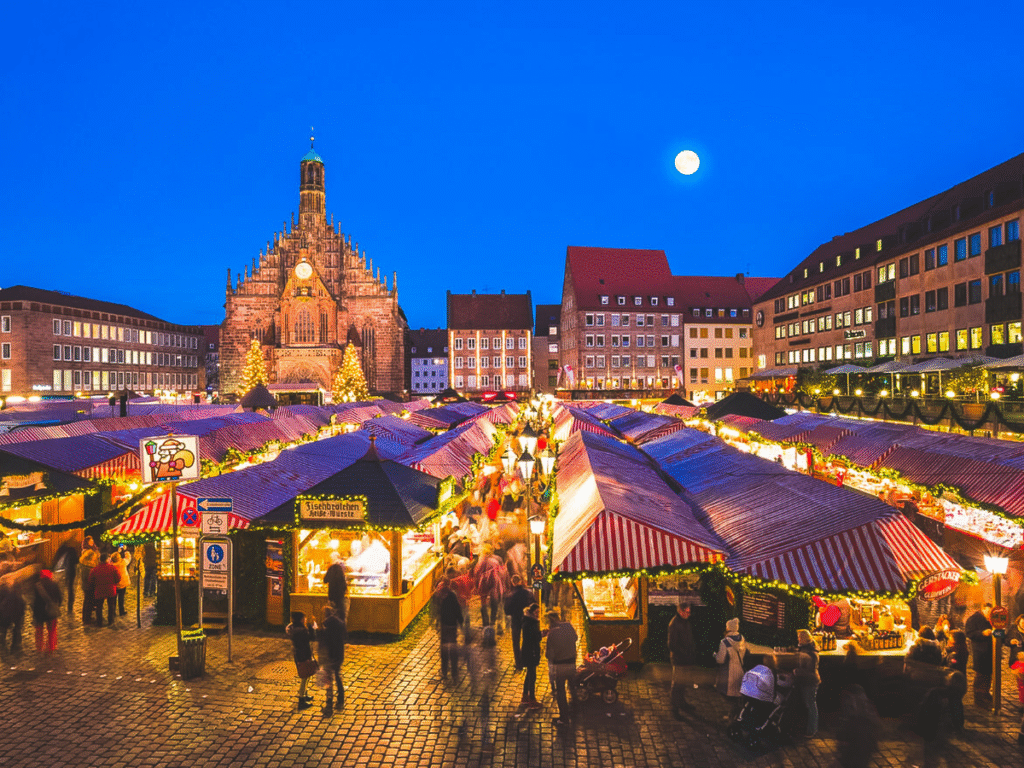
Munich combines Bavarian tradition with big-city energy. Multiple markets scattered throughout the city mean you can explore different atmospheres in a single day. The Marienplatz market provides the classic experience, while smaller neighborhood markets offer more local vibes.
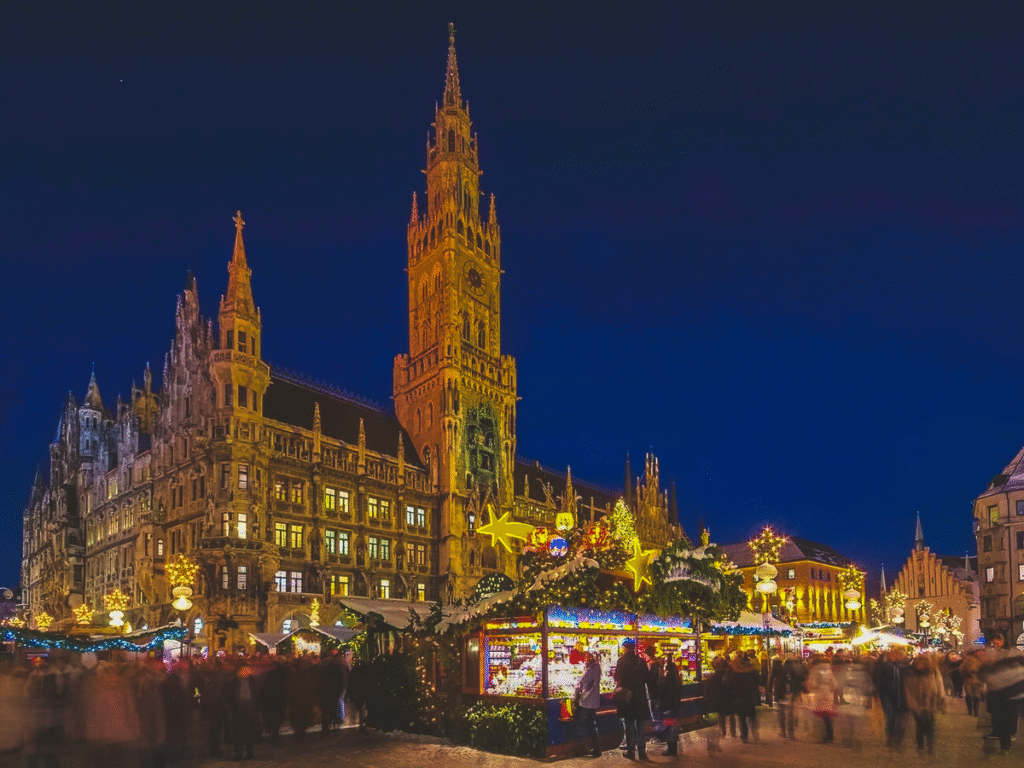
Cologne sets up markets in the shadow of its massive Gothic cathedral, creating one of Europe’s most dramatic Christmas market backdrops. The city’s location on the Rhine makes it easy to combine with other German Christmas market destinations.
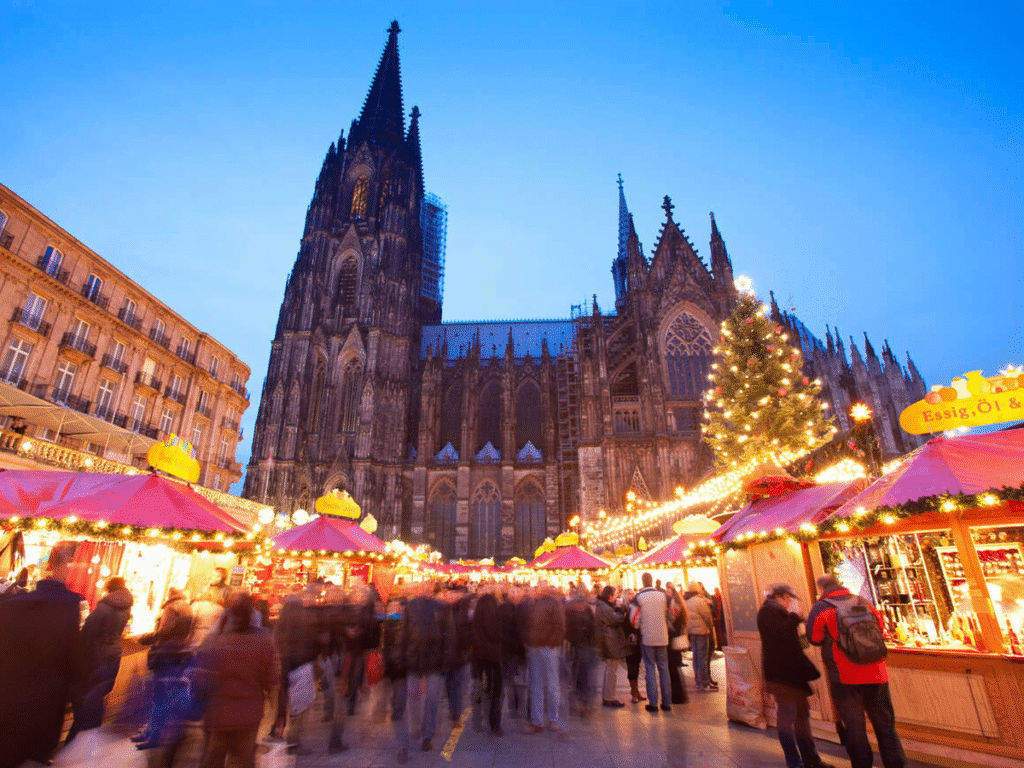
Dresden and Rothenburg ob der Tauber represent more intimate German Christmas market experiences. These smaller cities pack enormous charm, with medieval architecture and traditions that feel less commercialized than major city markets.
Budget-wise, German markets fall into the mid to upper range. Glühwein typically costs €3-5 per mug (plus deposit), food ranges from €4-12 depending on what you order, and crafts reflect Germany’s high quality standards with prices to match. Plan €40-60 per person per day for food and drinks at German markets.
Austria and Switzerland: Alpine Charm
Austrian Christmas markets blend imperial elegance with Alpine coziness, creating some of Europe’s most romantic festive settings. We spent considerable time in Vienna, which absolutely deserves its reputation as a Christmas market destination. The combination of Habsburg palaces, classical music heritage, and traditional Austrian Gemütlichkeit (coziness) creates magic that’s hard to replicate.
Vienna offers the full spectrum of Christmas market experiences. You’ve got your grand tourist markets like Rathausplatz with its spectacular City Hall backdrop, mid-sized gems like Am Hof that balance accessibility with local character, and smaller neighborhood markets scattered throughout the city.
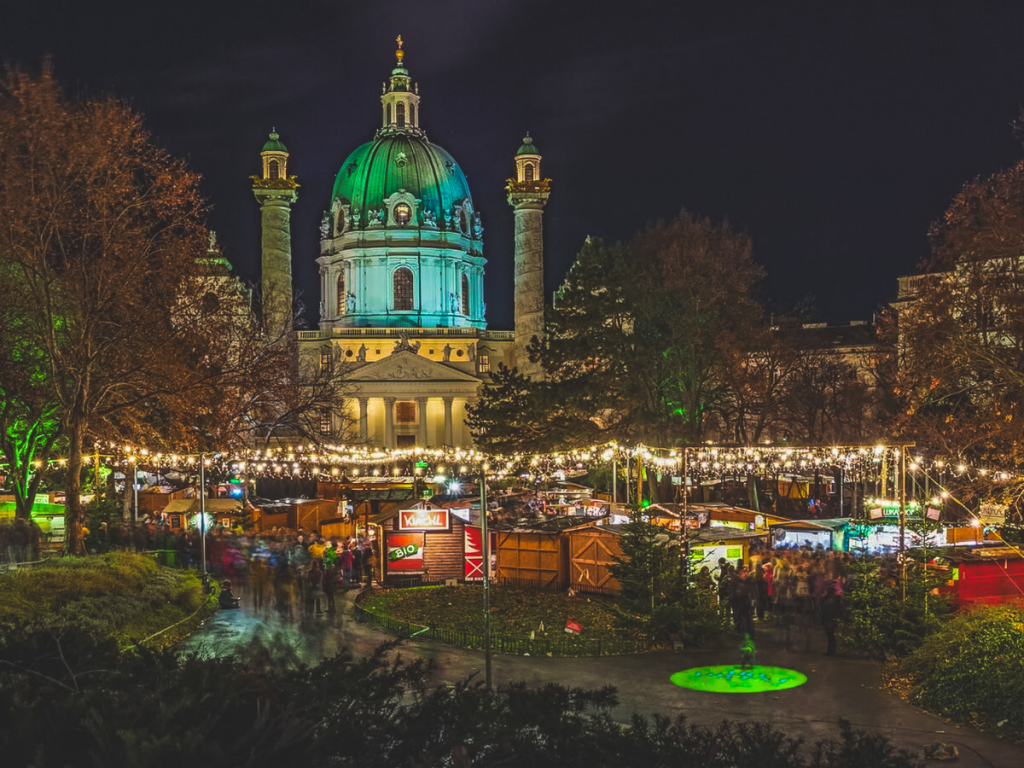
We covered multiple markets in two days, though you could easily spend a week exploring Vienna’s holiday offerings. For the full Vienna experience, check out our 2025 Vienna Christmas Markets Guide where we break down every market in detail.
Salzburg combines Christmas markets with Sound of Music charm and Mozart heritage. The alpine setting means better chances of snow, and the city’s compact size makes market-hopping manageable even in winter weather.
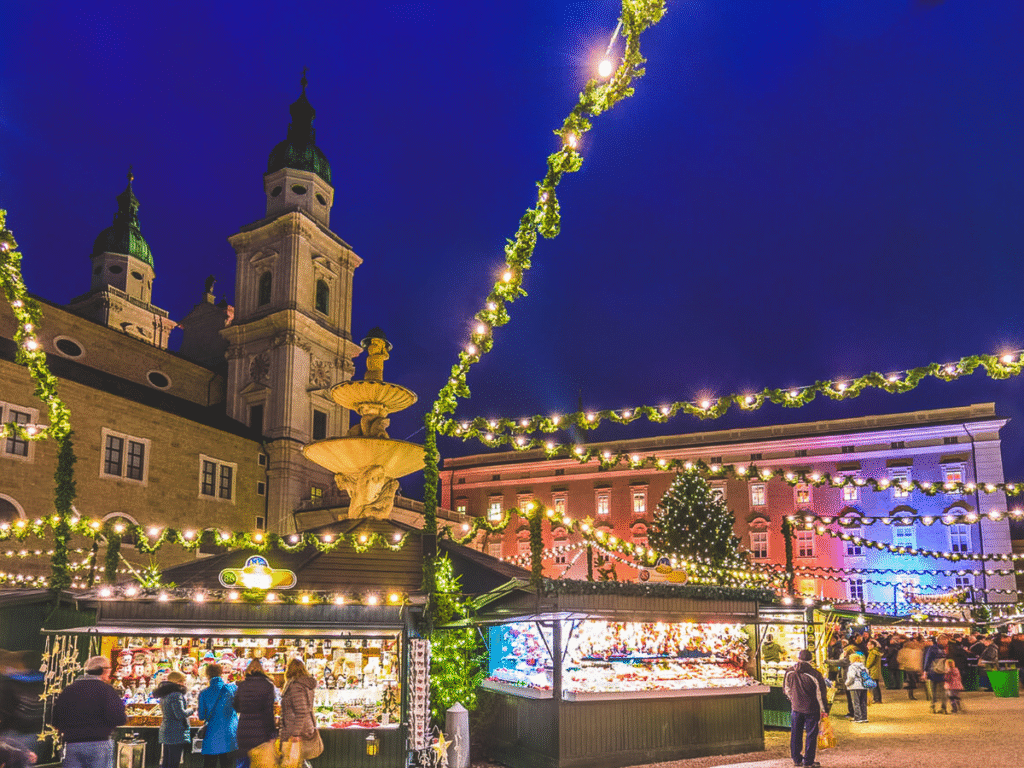
Innsbruck brings serious mountain drama to Christmas markets. The Austrian Alps provide a backdrop that makes even the most commercialized market stall feel special. This is your destination if you want to combine skiing with Christmas market exploration!
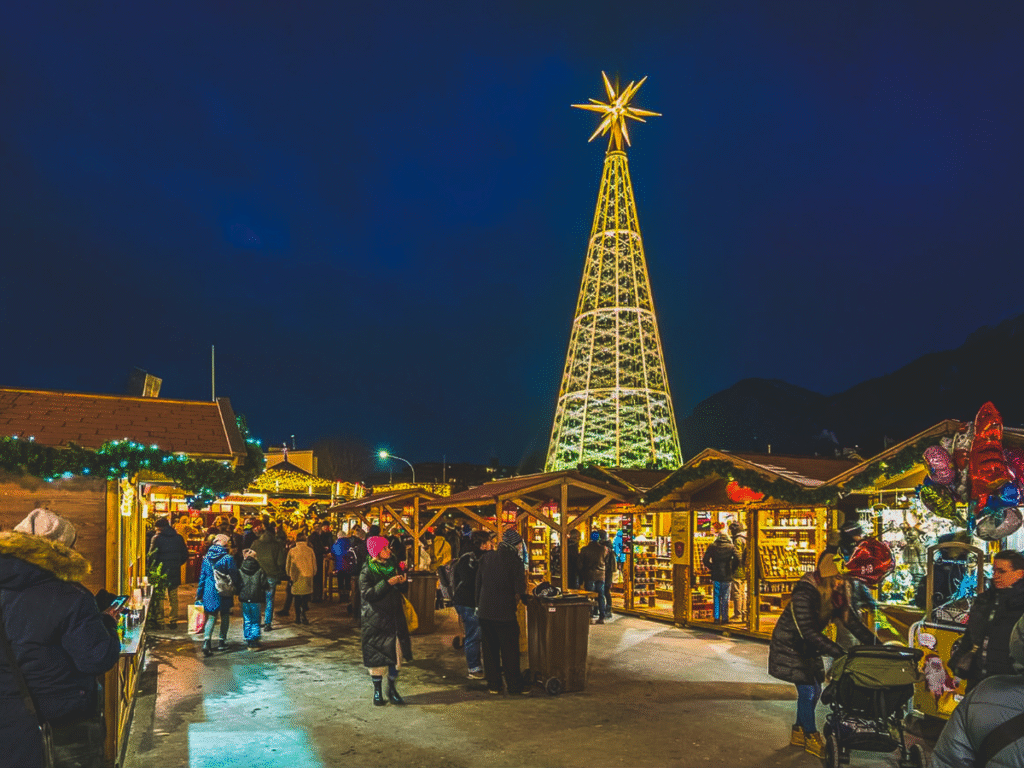
Swiss markets in cities like Zurich, Basel, and Bern deliver Alpine charm with Swiss efficiency and quality. The downside? Switzerland’s prices make even expensive Austrian markets look budget-friendly. Expect to pay 30-50% more than comparable German or Austrian markets.
Austrian markets typically run €35-50 per person per day for food and drinks, assuming you’re sampling various vendors and enjoying multiple rounds of glühwein. Swiss markets easily double that budget. Accommodation in both countries requires booking well in advance, with mid-range hotels running €100-180 per night in December.
Eastern Europe: Hidden Gems
This is where our December trip really surprised us. While Vienna and Budapest delivered the grand imperial Christmas market experience we expected, Eastern European destinations offered something we valued even more: authenticity without the tourist circus.
Bratislava became one of our favorite discoveries. Just an hour from Vienna by train, Slovakia’s capital offers Christmas markets that feel genuinely local. The Christmas markets in Bratislava captured everything we loved about European holiday traditions without the overwhelming crowds. Vendors had time to chat, prices were reasonable, and the food was phenomenal.
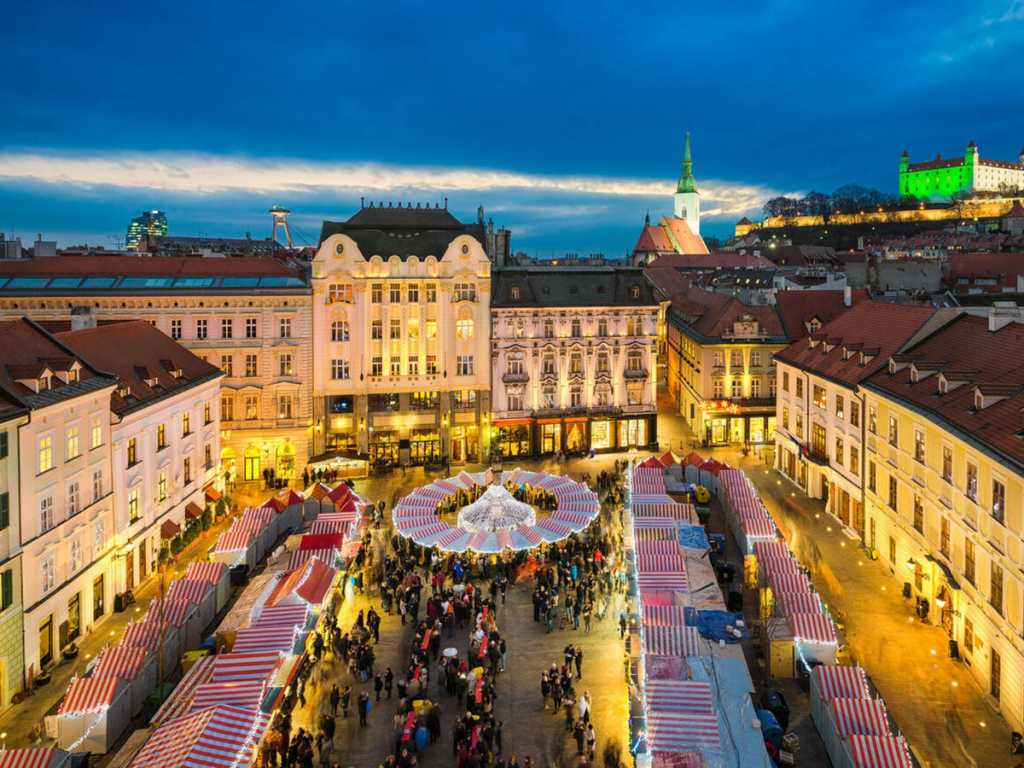
The Old Town setting provides plenty of charm, and you can easily combine Bratislava with Vienna for a duo that contrasts tourist-heavy with authentically local.
Prague brings fairy-tale architecture to Christmas market season. The Old Town Square market, with the Astronomical Clock and Gothic spires providing the backdrop, looks like it was designed specifically for Christmas. We discovered bombardino here (an Italian hot drink with eggnog, brandy, and whipped cream) that became JT’s obsession for the rest of the trip.
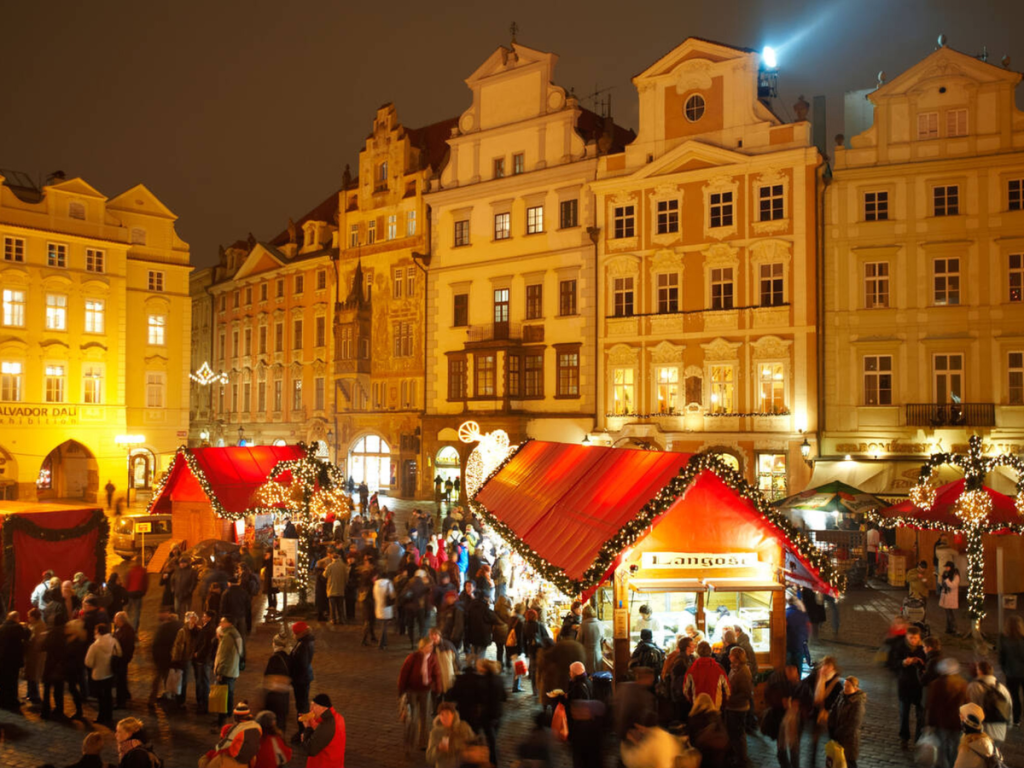
Prague sits in that sweet spot of being well-known enough to have excellent tourist infrastructure while maintaining enough local character to feel authentic.
Wrocław exceeded every expectation we had. Poland’s Christmas markets fly under most tourists’ radars, which means you get incredible experiences at fraction-of-Vienna prices. The Market Square (Rynek) Christmas market served up the best pierogis we’ve had anywhere, and the crafts felt more folk-art and handmade than mass-produced souvenirs. JT still talks about the pierogies we tried from a vendor who explained the centuries-old recipe while he served us.
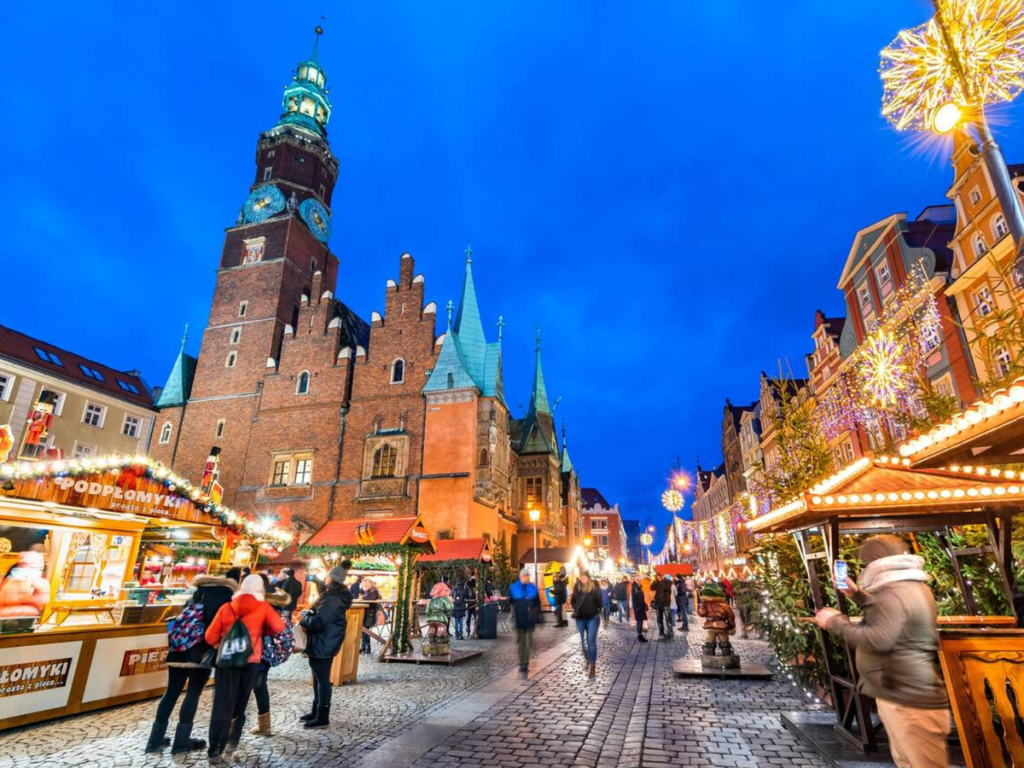
The Baltic cities of Tallinn and Riga brought Nordic coziness mixed with medieval charm. Tallinn’s Old Town is straight out of a storybook, with city walls, cobblestone streets, and architecture that hasn’t changed much since the Middle Ages. The Christmas market in Town Hall Square creates this intimate atmosphere that larger markets can’t replicate. Riga offers a similar vibe with slightly more urban energy.
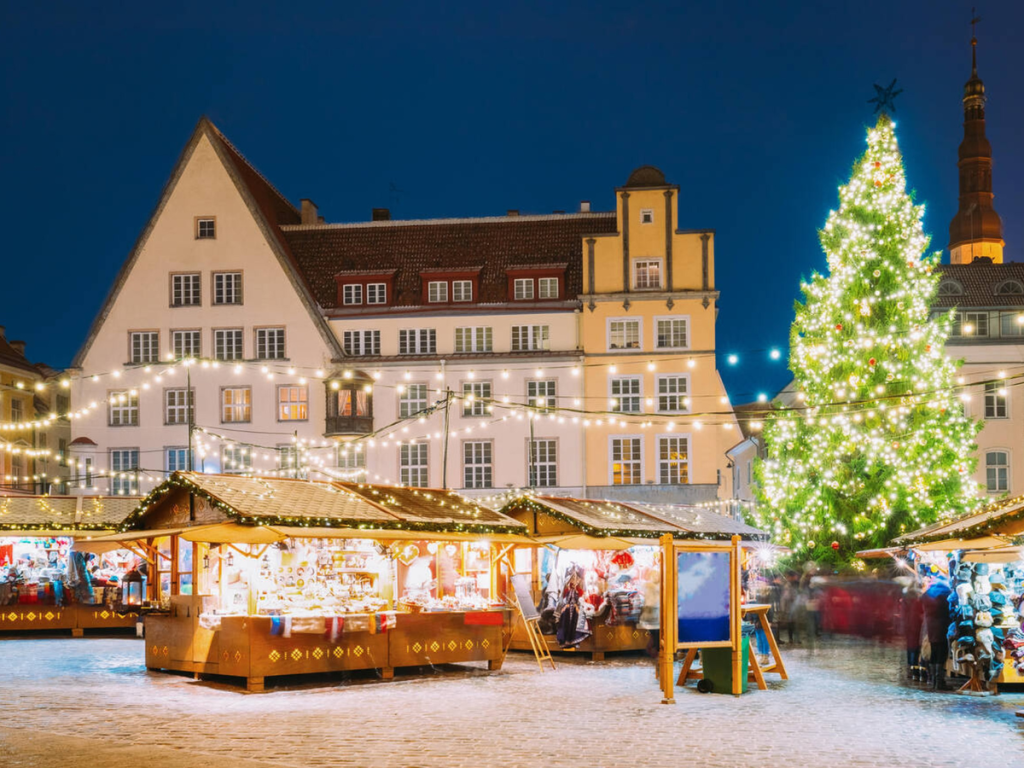
Budapest anchored our trip with its grand thermal baths, magnificent architecture, and Christmas markets that somehow manage to feel both touristy and authentically Hungarian. The markets around St. Stephen’s Basilica deliver spectacular settings, while smaller neighborhood markets offer more local experiences.
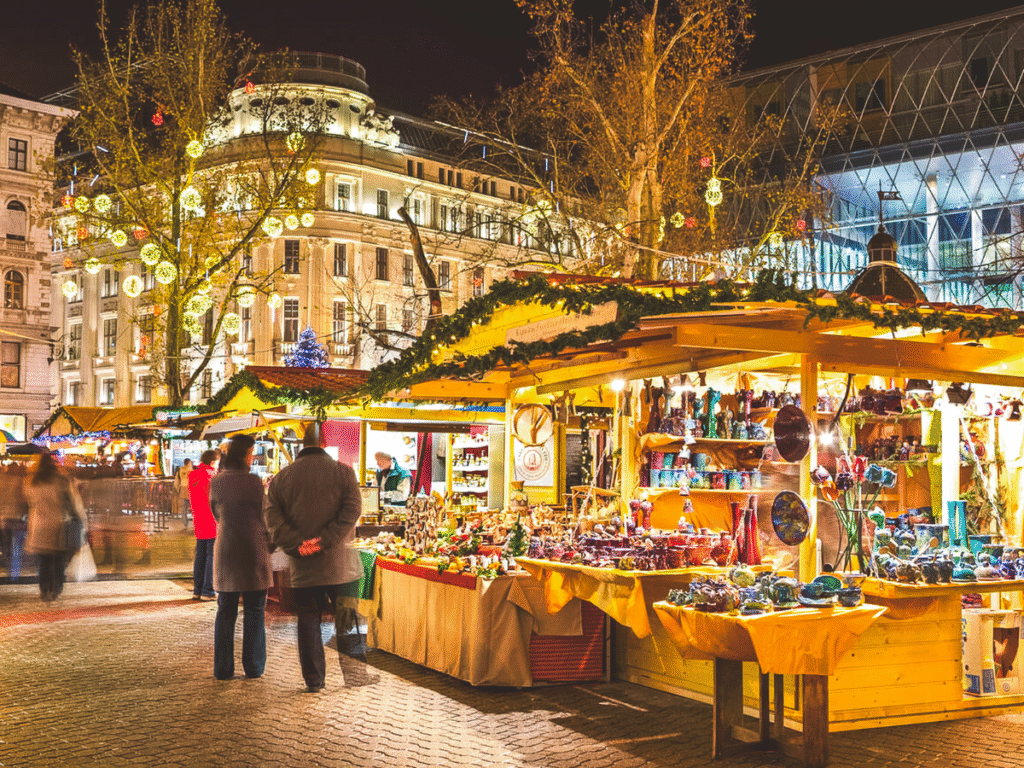
Eastern European Christmas markets offer unbeatable value. Food and drinks typically cost 30-50% less than Austrian or German equivalents, accommodation is more affordable, and you’ll find your money goes much further overall. We spent €25-35 per person per day at most of the Eastern European markets and felt like we were splurging. Poland was particularly budget-friendly, with excellent mid-range accommodation available for €50-80 per night!
If you’re looking to explore lesser-known Christmas market destinations that deliver authentic experiences without massive crowds, our guide to the most underrated European Christmas markets to visit in 2025 dives deep into hidden gems across the continent.
France, Belgium, and Beyond
Western European Christmas markets bring their own distinct character, emphasizing culinary excellence and medieval charm. While we didn’t hit France or Belgium on this particular trip, they’re definitely worth considering for your European Christmas market itinerary!
Strasbourg claims to host the oldest Christmas market in Europe (dating to 1570) and takes the title seriously. The Alsatian capital goes all-out with decorations, traditional crafts, and that unique blend of French and German culture that defines the region.
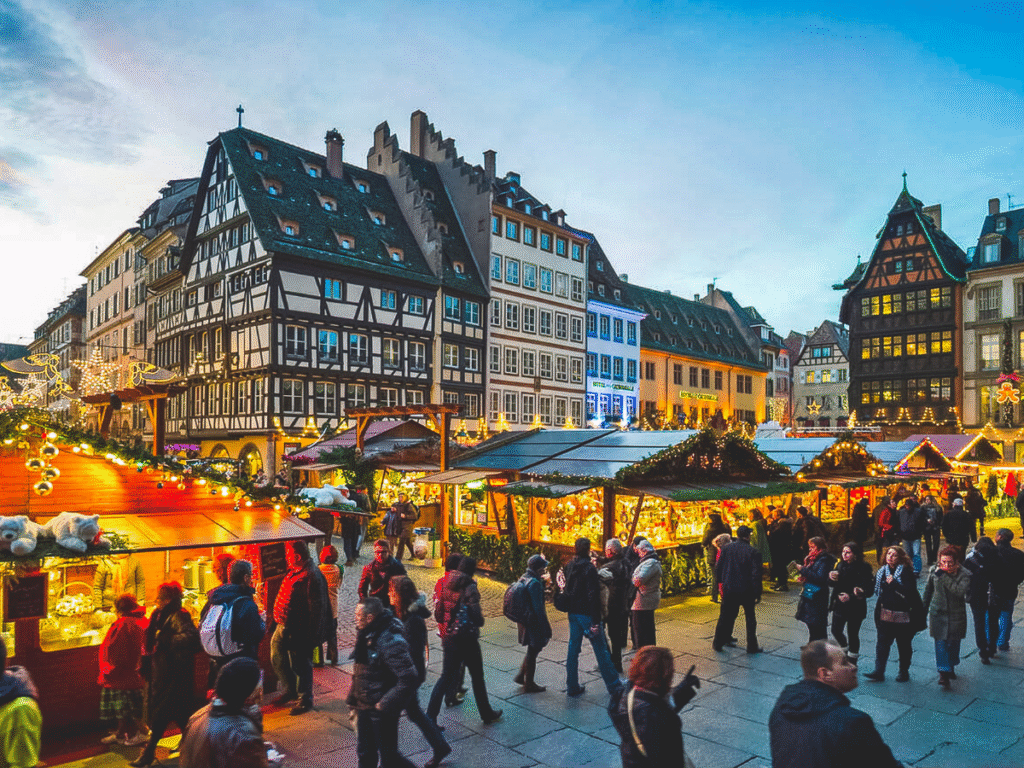
Colmar offers a more intimate Alsatian Christmas market experience. The half-timbered houses, canal-side markets, and medieval architecture create settings so picturesque they almost look fake. This is your destination if you want gorgeous photos without navigating massive crowds.
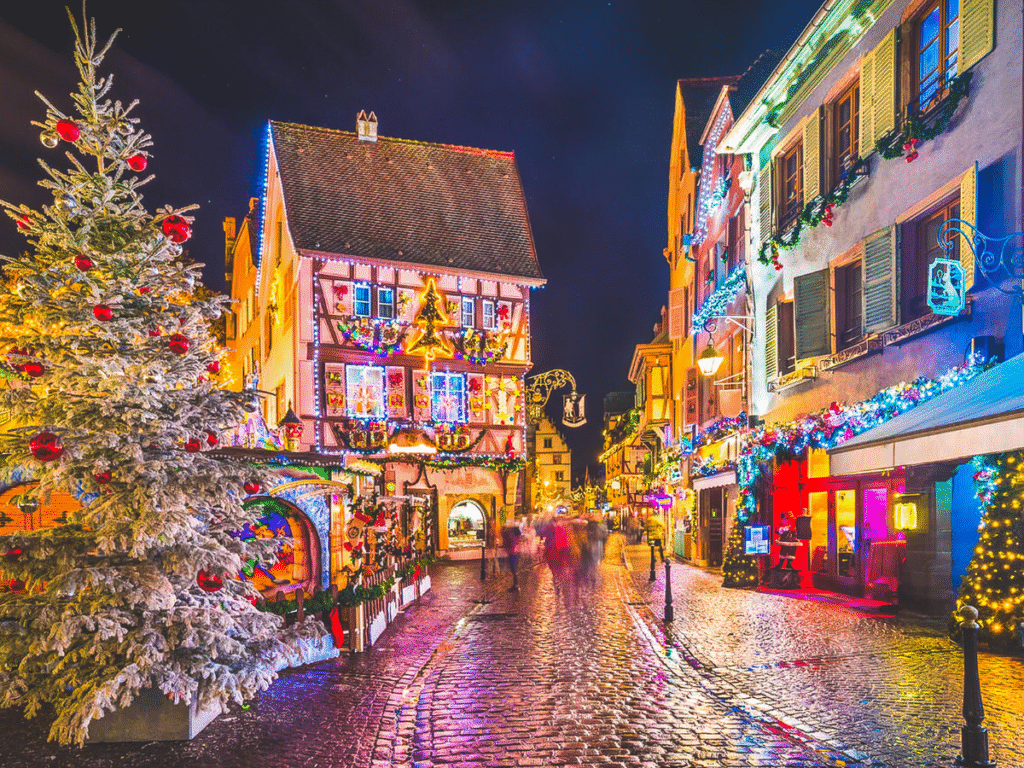
Brussels and Bruges bring Belgian character to Christmas markets. Expect excellent chocolate, Belgian beer variations on hot drinks, and that Flemish architecture charm that makes Belgian cities so photogenic. The Brussels market extends along the Grand Place and up toward Place Sainte-Catherine, creating a festive trail through the city center.
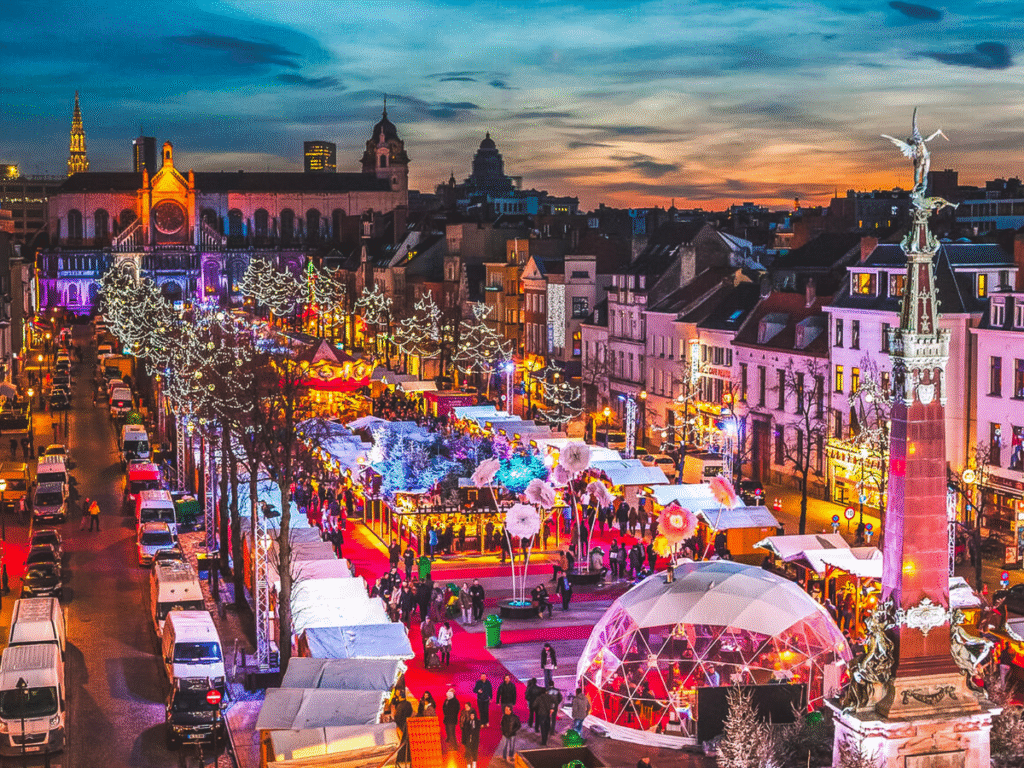
Lyon’s Festival of Lights (Fête des Lumières) happens in early December and combines with Christmas markets to create a unique experience. The entire city becomes an outdoor art installation with elaborate light projections on historic buildings.
Western European markets typically fall into the higher price range, comparable to Austria and Germany. French markets particularly emphasize quality over quantity, meaning you’ll pay premium prices but usually get premium products. Budget €40-60 per person per day for food and drinks, plus accommodation costs similar to Austria.
Travel Logistics You Need to Know
The difference between a magical Christmas market trip and a stressful logistical nightmare often comes down to planning your travel connections properly. December weather, limited daylight hours, and holiday travel crowds require more strategic thinking than summer European trips.
Getting Around Europe in Winter
Budget expectations for getting around: Train tickets between neighboring cities (1-3 hours) typically cost €15-40 per person. Longer routes or high-speed trains run €50-100+. Budget flights cost €30-80 if you book ahead and avoid checked luggage. Within-city transit passes cost €5-8 per day. For a week-long trip hitting 4-5 cities, budget €200-400 per person for all transportation between cities, plus another €40-60 for local transit.
Trains
Trains became our primary transportation method during our Christmas market adventure, and for good reason. European train networks connect most major Christmas market destinations efficiently, operate reliably in winter weather, and deliver you directly to city centers where markets are located.
We used Omio and Rome2Rio to compare train routes and prices. Both platforms aggregate options from multiple rail companies, making it easy to see all available connections. Rome2Rio often links out to official rail websites for booking, while Omio allows direct booking for many routes.
Book train tickets early when possible. Unlike flights, many European train tickets get cheaper the further in advance you book, especially for high-speed routes.
Our Vienna to Bratislava route is a great example of perfect European train travel. The one-hour journey cost around €15-20 per person, ran multiple times daily, and dropped us in Bratislava’s city center ready to explore. No security lines, no checking bags, no commuting from airports to city centers.
Planes
Longer routes require more planning. Our train from Bratislava onward would have taken most of a day, so we opted to fly instead. This brings us to an important planning principle: flying sometimes makes more sense than trains, especially when covering significant distances.
Use Google Flights to compare flight options and prices. Budget airlines like Ryanair, Wizz Air, and EasyJet connect most European cities, often for €15-80 per person if you book ahead and travel light. The catch? They charge for everything from checked bags to printing boarding passes at the airport, so make sure to do your research.
We flew from Bratislava to Tallinn, Riga to Wrocław, and Wrocław to Prague when train connections were limited or travel times excessive. In each case, flying saved us 6-10 hours of travel time, though we paid slightly more than equivalent train tickets would have cost.
Buses
Buses fill the gaps between train and flight networks. Our Tallinn to Riga segment went by bus because it was direct, comfortable, and cost-effective. Flixbus and similar companies operate extensive routes across Europe with modern coaches, wifi, and competitive pricing. Oftentimes, the duration of the ride is comparable to the train as well!
Public Transit
For getting around within cities, daily transit passes are your best friend. Almost every European city offers unlimited transit passes for €5-8 per day, covering metros, trams, and buses. We bought daily passes in every city we visited and used them extensively. In Vienna alone, we probably took 10+ transit trips across our two days, making the €8 daily pass an obvious value.
Walking becomes surprisingly important during Christmas market trips. Many historic city centers are compact, with multiple markets within walking distance of each other. Vienna’s Rathausplatz, Am Hof, and Stephansplatz markets are all within a 20-minute walk. We logged serious mileage walking between markets, exploring neighborhoods, and simply wandering festively decorated streets.
Where to Stay
Accommodation strategy significantly impacts your Christmas market experience. Stay too far from the action and you’ll waste time and energy commuting. Overspend on location and you might sacrifice days from your trip to afford it.
We consistently chose mid-range hotels in relatively central locations, spending €50-100 per night depending on the city. This budget bought us comfortable private rooms with bathrooms, breakfast included (in Eastern Europe), and locations within walking distance or short transit rides from major markets.
We used Expedia to compare hotel prices, setting filters for our preferred neighborhoods and price ranges. For apartments, Airbnb and Vrbo offer the most options, though note that many European cities have implemented tourist accommodation restrictions.
Book early for December travel. This cannot be stressed enough. Christmas market season represents peak tourism for European cities, and quality centrally-located accommodation fills up months in advance. We booked about two months out and found options already limited. Three to four months ahead is ideal, especially for popular destinations like Vienna, Prague, or German Christmas market cities.
Location matters more than you might think. Yes, you can save €20-30 per night staying outside the center. But will you actually save money if you’re constantly paying for transit? More importantly, will you miss spontaneous opportunities to explore when heading back to markets requires a 30-minute commute?
One more option to consider: Christmas market river cruises. These typically cost €2,000+ per person but include your accommodation, most meals, and transportation along the Danube hitting multiple Christmas market cities. If you value convenience over budget and prefer a structured itinerary, river cruises eliminate the planning stress while delivering a curated Christmas market experience. We opted for the independent travel route because we wanted flexibility, but several travelers we met were doing cruises and loved the all-inclusive ease.
Budgeting for Food, Drinks, and Souvenirs
Money conversations kill the Christmas market magic, but let’s be practical. Understanding realistic costs helps you plan a trip that doesn’t end with credit card regret in January.
Food and drink at Christmas markets varies dramatically by location and your consumption habits. In Vienna, we spent €40-50 per person per day eating and drinking exclusively at markets. This bought us multiple food items, several rounds of glühwein or other hot drinks, and occasional splurges on desserts. We weren’t being particularly frugal, but we weren’t ordering the most expensive items at every stall either.
Eastern European markets cut those costs significantly. In Bratislava and Wrocław, we spent €25-35 per person per day and felt like we were eating like kings. The food quality matched or exceeded what we found in more expensive markets, proving that higher prices don’t necessarily mean better experiences.
Breaking down typical market costs:
Drinks run €3-5 for glühwein or punsch in most markets, with €5 deposit for ceramic mugs (which you can return or keep). Hot chocolate, coffee, and non-alcoholic options typically cost slightly less at €2.50-4. Premium drinks like feuerzangenbowle or specialty cocktails go up to €6-8.
Food depends on what you’re ordering. Roasted chestnuts, pretzels, or crepes cost €3-5. Bratwurst, langos, or pierogis run €8-12. Full meal items like schnitzel or substantial stews cost €12-15. Pastries and sweets typically range €3-10.
Crafts and souvenirs span every price imaginable. Small ornaments, candles, or market mugs (if you keep them) start around €5-10. Quality handmade items, woolens, or carved wooden pieces run €20-50. Elaborate art pieces, jewelry, or premium crafts can exceed €100.
We kept those Christmas mugs from most markets, treating the €5 deposit as a souvenir purchase. They’re now some of our favorite holiday decorations, and every time we use them, we remember specific markets where we bought them.
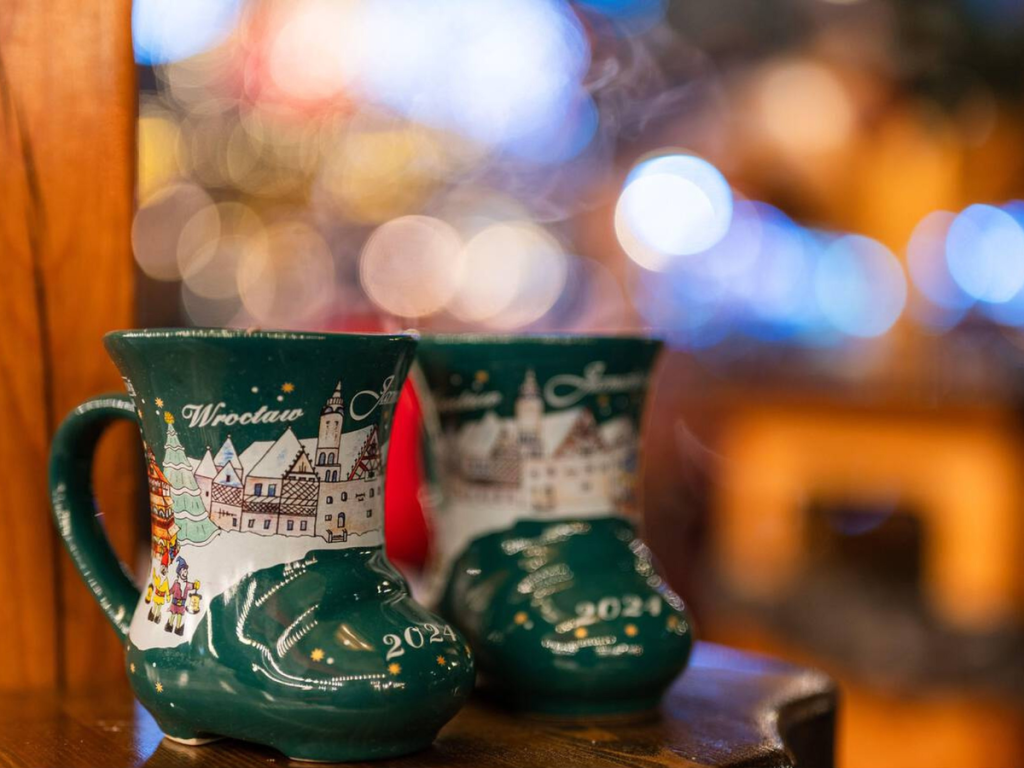
Our daily spending breakdown across the trip:
- Vienna: €45/person for food and drinks at markets
- Bratislava: €30/person for food and drinks
- Budapest: €38/person for food and drinks
- Tallinn: €35/person for food and drinks
- Riga: €32/person for food and drinks
- Wrocław: €28/person for food and drinks
- Prague: €33/person for food and drinks
Beyond markets, factor in occasional restaurant meals. We didn’t eat every meal at markets (honestly, you’d burn out), so budget another €15-25 per person per day for non-market meals. This could be breakfast if your accommodation doesn’t include it, or dinners when you want to sit down somewhere warm.
Souvenirs added another variable layer to our budget. We probably spent €100 total on Christmas market crafts, ornaments, and gifts across the entire trip. Some markets we barely bought anything, while others (Vienna’s Am Hof, particularly) drew more purchases because the quality/uniqueness impressed us.
Experiencing the Markets
Actually being at European Christmas markets beats any planning spreadsheet, and knowing what to expect helps you make the most of your festive time.
What to Eat and Drink
Christmas market food became one of our trip’s unexpected highlights. We went in expecting decent festival food and discovered culinary traditions that made us plan return trips just to eat specific items again.
Glühwein is the obvious starting point. This spiced mulled wine appears at literally every Christmas market in every country we visited, but quality varies wildly.
Don’t ignore regional hot drink variations. Punsch (fruit-based hot drinks with rum or other spirits) offered amazing alternatives to wine-based glühwein. Apple punsch became JT’s obsession in Vienna, while cherry versions we found in Prague delivered this perfect balance of sweet and warming.
We discovered bombardino at a Prague market, completely by accident. This Italian hot drink combines eggnog, brandy, and whipped cream into something that tastes like liquid dessert and warms you thoroughly. JT ordered a second cup immediately after finishing his first!
Hot chocolate at European Christmas markets exceeds American expectations. Thick, rich, actually-made-with-real-chocolate (not powder) versions appear at most quality markets. Many vendors serve it with real whipped cream, or even liqueur additions if you’re feeling festive. JT claims he “only” had six cups during our Vienna visit, but I counted at least eight.
Moving to food, every country brings its own specialties to Christmas markets, and trying regional dishes became our favorite way to experience local culture through cuisine.
Kiachl became our Vienna obsession. This traditional Austrian fried pastry might look simple, just rounds of fried dough, but when served hot with tart cranberry sauce or sauerkraut, it achieves this perfect balance of crispy, fluffy, sweet, and savory that kept us coming back. We found it at Vienna’s Rathausplatz, returned twice (maybe three times) specifically for more kiachl, and I’m not exaggerating when I say it was some of the best food I’ve ever eaten anywhere.
Pierogis in Poland elevated our Wrocław experience. These dumplings appear at Polish Christmas markets filled with everything from traditional potato and cheese to sauerkraut and mushroom to sweet fruit versions served with cream.
Bratwurst and other sausages are Christmas market staples across Germany, Austria, and beyond. We had exceptional bratwurst in Vienna’s Maria-Theresien-Platz market (sadly not operating in 2025 due to construction) that came from a vendor who explained his sausages used locally sourced pork and traditional spice blends.
Langos appeared at multiple markets and became one of our favorites. This Hungarian fried dough gets topped with sour cream, cheese, and various other additions. It’s messy, indulgent, heavy enough to count as a meal, and absolutely delicious on cold December evenings.
Roasted chestnuts might seem basic, but they’re perfect Christmas market food. They warm your hands while vendors roast them, smell amazing, and provide a light snack that doesn’t fill you up too much when you’re market-hopping and want to save room for trying multiple foods.
Pastries and sweets span every European baking tradition. Lebkuchen (elaborate German gingerbread) comes in intricate shapes and designs. Strudel served warm with vanilla sauce appeared at Austrian markets. Trdelník (those chimney cake spirals) showed up in Czech markets. Bällchen (basically donut holes) appeared everywhere, served with sauces ranging from vanilla to pistachio.
Don’t sleep on savory pastries. We found amazing filled breads, pretzels the size of dinner plates, and various regional specialties that beat out sweets for pure satisfying deliciousness.
Also, döner kebab saved us multiple times. Not traditional Christmas market food, but you’ll find doner stands or shops near most markets across Europe. When you need something substantial, familiar, affordable, and quickly served, döner delivers. It became our go-to when we’d had enough market food and just wanted something straightforward and filling.
Shopping and Souvenirs
Christmas market shopping offers treasures you genuinely can’t find elsewhere, but it also includes plenty of mass-produced items that look handmade but aren’t.
Handmade ornaments represent classic Christmas market purchases. At their best, you’re buying hand-blown glass, hand-carved wood, or hand-painted ceramics from people who make them using traditional techniques. We found stunning glass ornaments in Vienna that the vendor demonstrated making right there at his stall. That’s the kind of shopping experience that makes Christmas markets special.
Christmas market mugs became some of our favorite souvenirs. Most markets charge a €5 deposit for ceramic mugs and let you keep them instead of returning for your deposit back.
Woolens and textiles appear at most markets, especially in Alpine regions. Hand-knitted scarves, hats, mittens, and socks make practical souvenirs that you’ll actually use. Again, look for signs of handwork. Machine-knitted items have perfectly uniform stitches, while hand-knitted pieces show slight variations and typically cost more because of the labor involved.
Wood carvings range from small ornaments to elaborate nutcrackers and figurines. Traditional Alpine wood carving represents serious craftsmanship, with artisans spending years learning techniques. We watched a vendor in Bratislava car
Preparing for Your Trip
Logistical preparation makes the difference between smooth sailing and constant frustration when you’re traveling through multiple countries in winter conditions.
Packing Essentials for Cold Weather
Layering beats heavy coats for European Christmas market trips. You’ll be moving between cold outdoor markets, warm shops, heated transit, and your accommodation constantly. Being able to add or remove layers keeps you comfortable across these temperature variations.
We each brought:
- Thermal base layers (tops and bottoms) that went under everything
- Mid-weight fleece or wool sweaters for middle insulation
- Waterproof, windproof outer jackets that weren’t too bulky
- Scarves, gloves, and hats that fit in pockets when not needed
Waterproof boots are non-negotiable. European winter means potential snow, definitely slush, occasional rain, and constantly wet cobblestone streets. Your feet will be miserable if your shoes aren’t up to the task. We both wore insulated, waterproof boots with good traction every single day.
Bring a crossbody bag or secure backpack. Christmas markets get crowded, pickpockets operate in tourist areas, and you want your hands free for holding drinks, carrying purchases, and taking photos. A bag that sits against your body and closes securely protects your valuables while keeping them accessible.
Pack charging cables and power adapters appropriate for Europe. Your phone will get heavy use for navigation, photos, translation apps, and staying in touch with people back home. Portable battery packs saved us multiple times when our phones were dying and we still needed maps to find our accommodation.
Don’t overpack. You’ll be moving between cities every couple days, often using trains where you carry your own luggage. One carry on or checked bag per person plus a personal item/backpack keeps things manageable. We each brought a small rolling suitcase and a backpack, and it was plenty for two weeks of travel.
One thing to note, we both got travel insurance before going on our trip. We use SafetyWing insurance and it has always worked well for us! We even had to use it when JT and I (yes, both of us) got bit by a cat in Cappadocia. Now, we will never travel without it.
Final Thoughts on Planning the Perfect Trip
Planning a European Christmas market trip requires balancing logistics, budget, and authentic experiences into an itinerary that delivers holiday magic without constant stress.
Start planning early. December in Europe represents peak tourist season, and waiting until last minute means limited accommodation options, higher flight prices, and fuller markets. Three to four months ahead is ideal for booking. We learned this lesson by booking only two months out and finding options already constrained.
Mix famous and underrated destinations. Yes, Vienna delivers incredible Christmas market experiences. But pairing it with Bratislava, or combining Prague with Wroclaw, gives you both the iconic experiences and those authentic local moments that often create the best memories.
Start planning your European Christmas market trip now. Research destinations that match your budget and interests. Book your major transportation and accommodation. Then leave room for those unplanned moments of magic that make travel worthwhile.
If you want to see an example itinerary, make sure to check out our Ultimate 10-Day European Christmas Markets Itinerary for 2025!
And if you take anything from our experience, remember this: the “perfect” Christmas market trip isn’t about seeing the most markets or visiting the most famous cities. It’s about finding those moments, whether in Vienna’s grand markets or Bratislava’s intimate local celebrations, where you connect with European holiday traditions in ways that create memories lasting far longer than December.
Now get planning!
